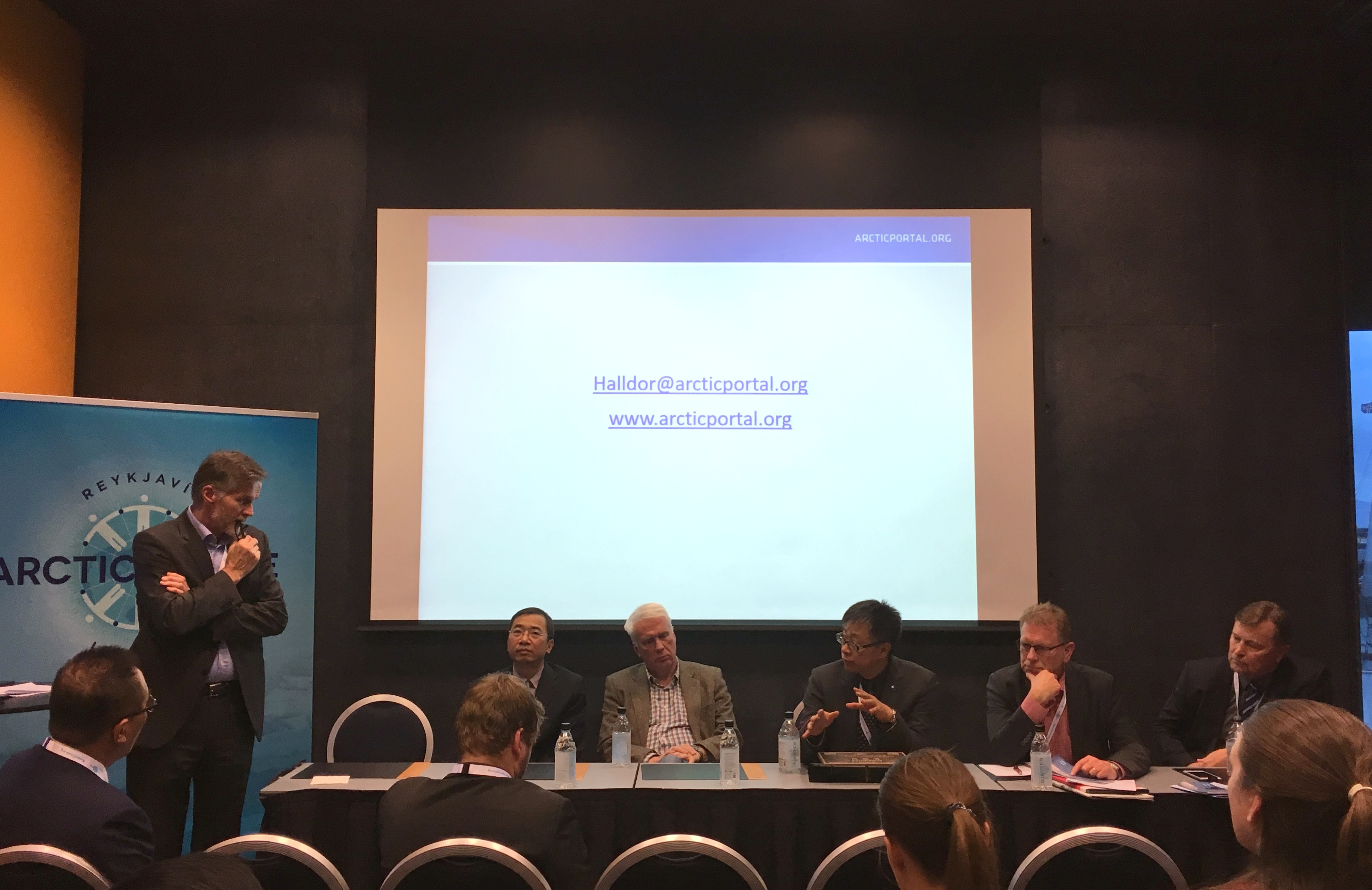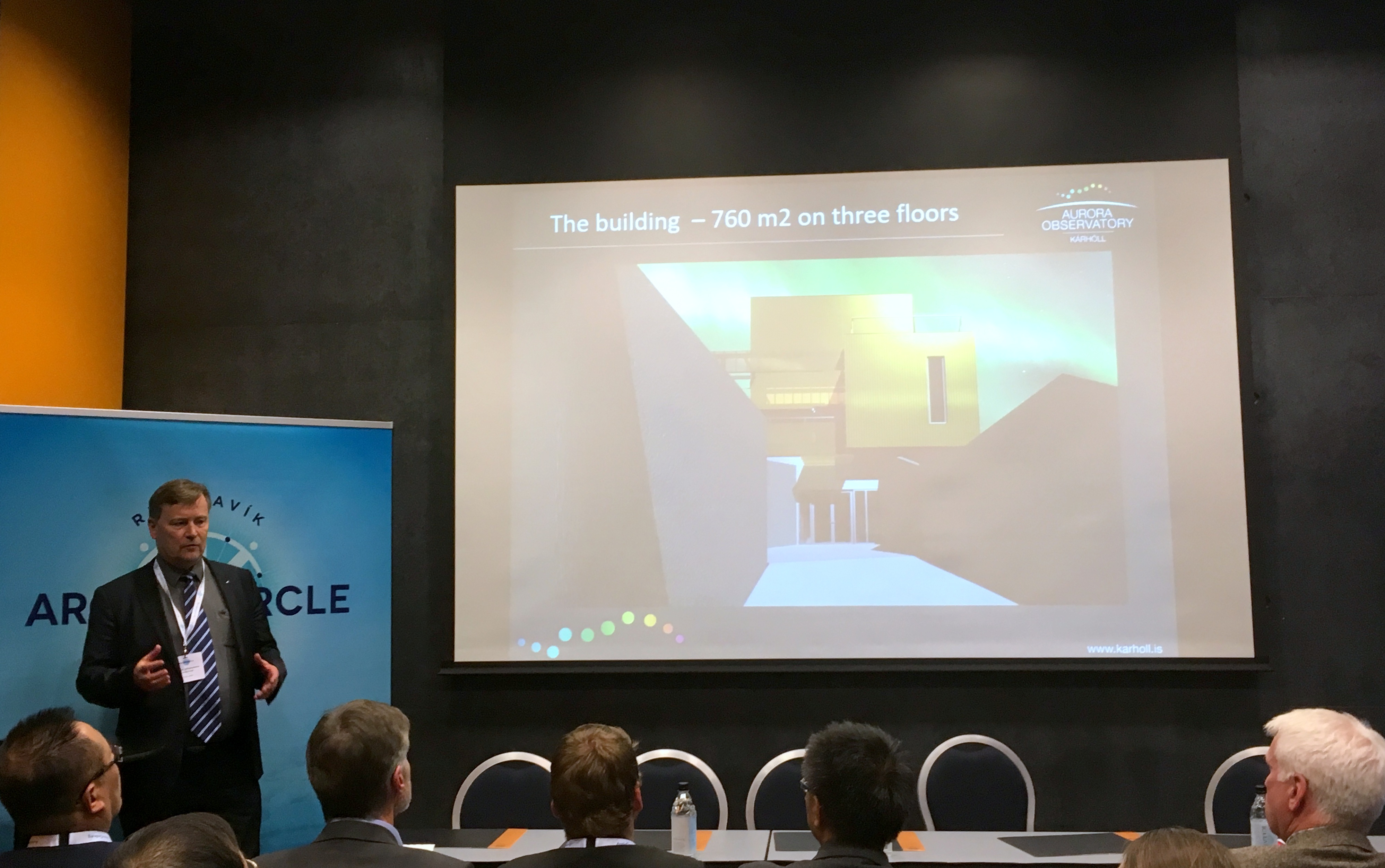On Friday October 7th, theChinese-Icelandic Aurora Observatory (CIAO) was presented during a session at the 2016 Arctic Circle Assembly in Reykjavík, Iceland.
The session, which was chaired by the Director of RANNÍS (the Icelandic Centre for Research) Hallgrimur Jónasson and Deputy Director of the Polar Research Institute of China (PRIC) Zhu Jianang, presented how the Chinese-Icelandic research cooperation and CIAO developed over the past several years.
The session panel featured contributions from:
- Director General of the Polar Research Institute of China, Yang Huigen
- Head of Atmosphere and Space Physics Division at the Polar Research Institute of China, Hu Hongqiao
- Research Scientist at the Science Institute at theUniversity of Iceland, Gunnlaugur Björnsson
- Senior Adviser at RANNÍS Thorsteinn Gunnarsson
- Director of the Arctic Portal, Halldór Jóhansson
Expert scientists on the panel, including PRIC Director General Yang Huigen, explained that Iceland is located at an ideal latitude to observe auroras. The country is positioned at the end of the plasma sheet in Earth’s magnetosphere so that at night, when Iceland is facing away from the sun, scientists have an excellent opportunity to observe auroras and substorm auroras. Auroras are caused when plasma from the sun’s solar wind interact with gasses in Earth's atmosphere, and occur in a ring close to the planet's magnetic poles.
Research cooperation between China and Iceland has been flourishing in recent years, in parallel with a strengthening political cooperation between the two countries.
RANNÍS and Arctic Portal were instrumental in facilitating a visit of China’s polar research vessel, the Xue Long (snow dragon) to Iceland, making calls at both Reykjavík and Akureyri during its voyage through the region in 2012.
Not long after, a memorandum of understanding on research cooperation was signed between the PRIC and RANNÍS in August 2012. This memorandum paved the way for the establishment of an annual China-Nordic Arctic Cooperation Symposium, which has been held every June since 2013, as well as to the establishment of the China-Nordic Arctic Research Center (CNARC) in Shanghai in December of 2013. CNARC is a cooperation between four Chinese and six Nordic research institutions, including PRIC and RANNÍS.
Panelists at the session explained that the tiny community of Kárhóll in the northeast of Iceland was selected to host the Chinese-Icelandic Aurora Observatory, as it is far from any significant light pollution. Construction on CIAO began in June 2014 and is expected to be fully completed in 2017, although the first Chinese scientists will arrive and begin their research before the end of 2016.
In his presentation on the panel, Arctic Portal Director Halldór Jóhansson exhibited photos of the nearly completed observatory and explained the layout of the building. The observatory will feature a visitor’s centre at which people will be able to learn more about auroras and the research taking place at CIAO. Jóhansson highlighted the importance of adding a visitor’s centre to the observatory, as it not only encourages tourism to the region, but it also promotes education in the highly important STEM education subjects (Science, Technology, Engineering, and Mathematics).
A ceremony at which the cornerstone of the observatory will be put in place attended by PRIC Director General Yang Huigen, the Chinese Ambassador to Iceland Weidong Zhang and other VIPs takes place the afternoon of Monday October 10th in Kárhóll.



